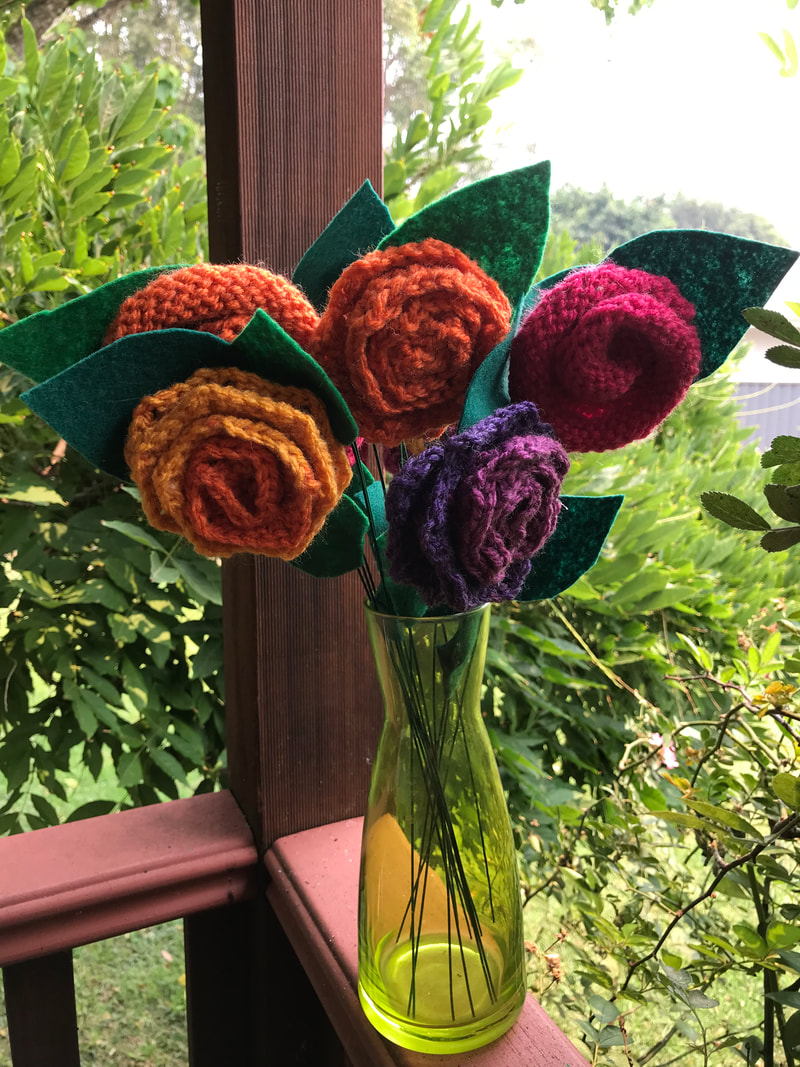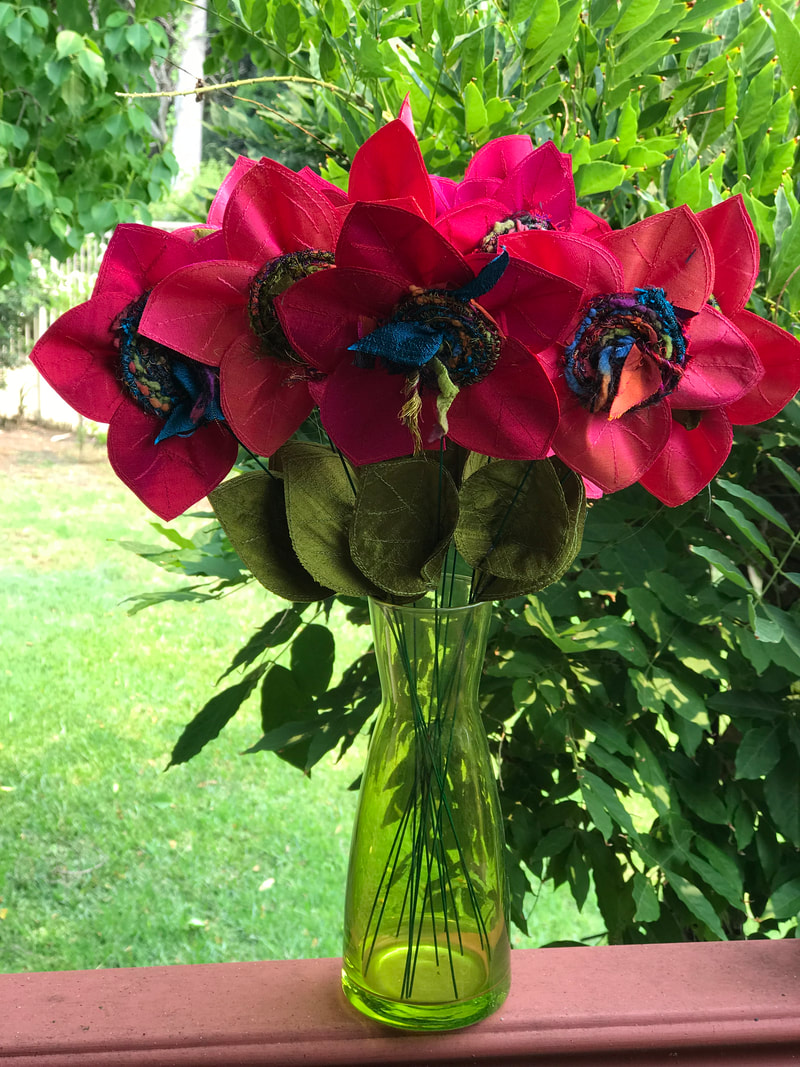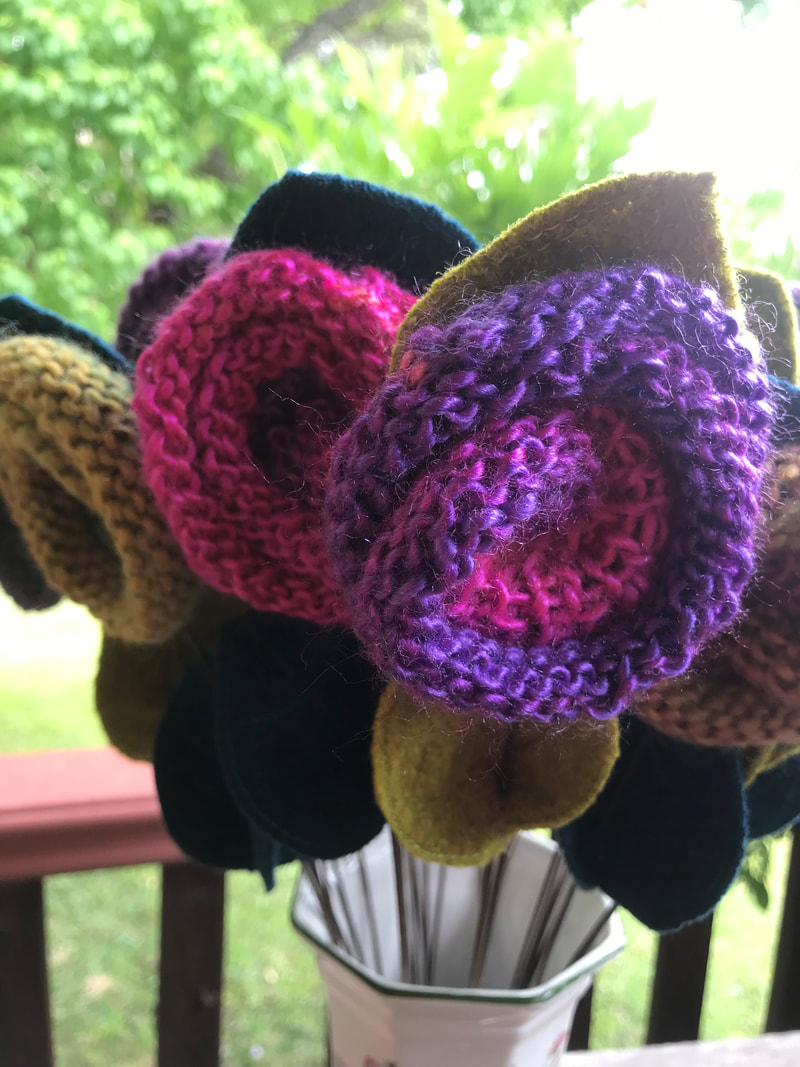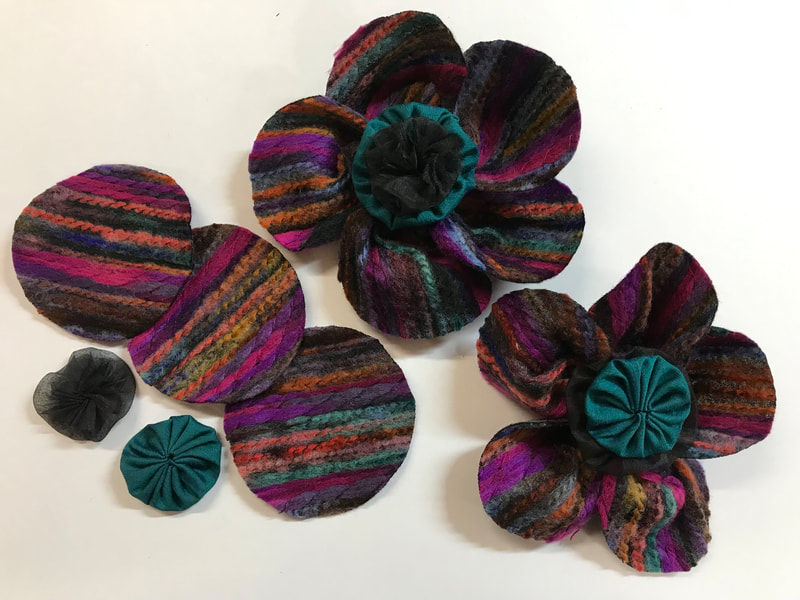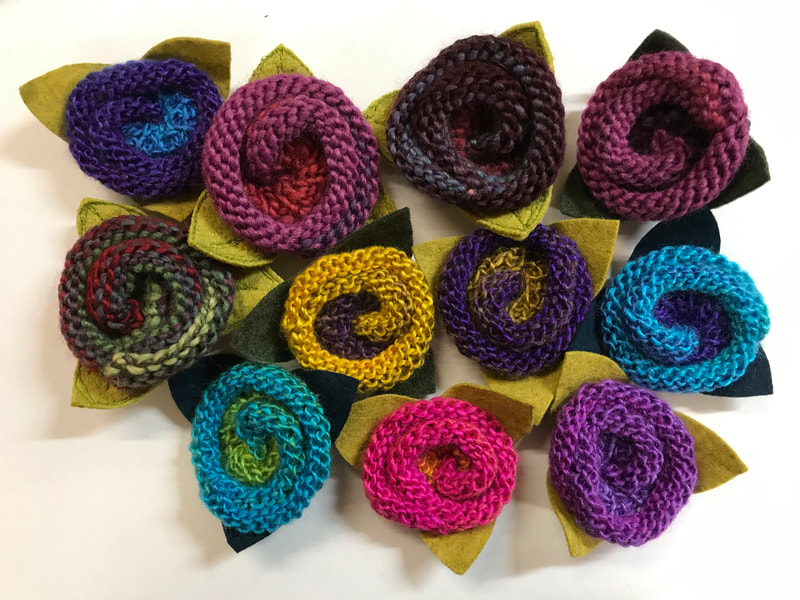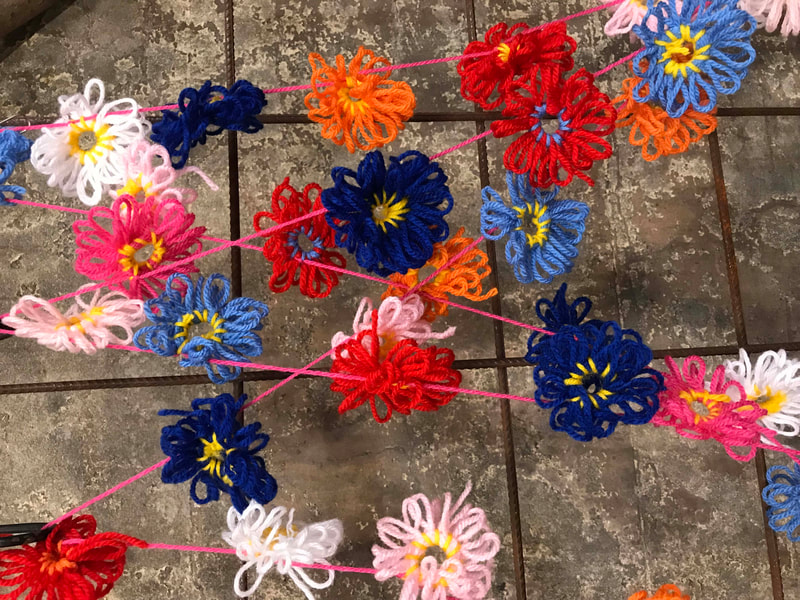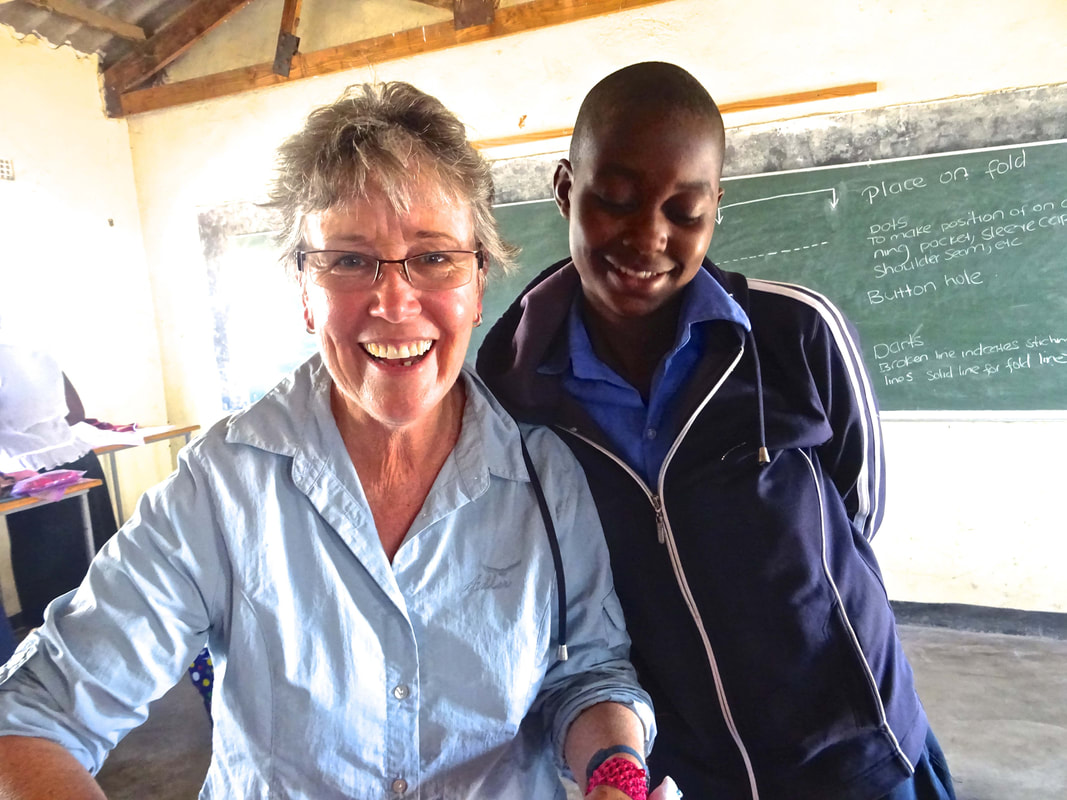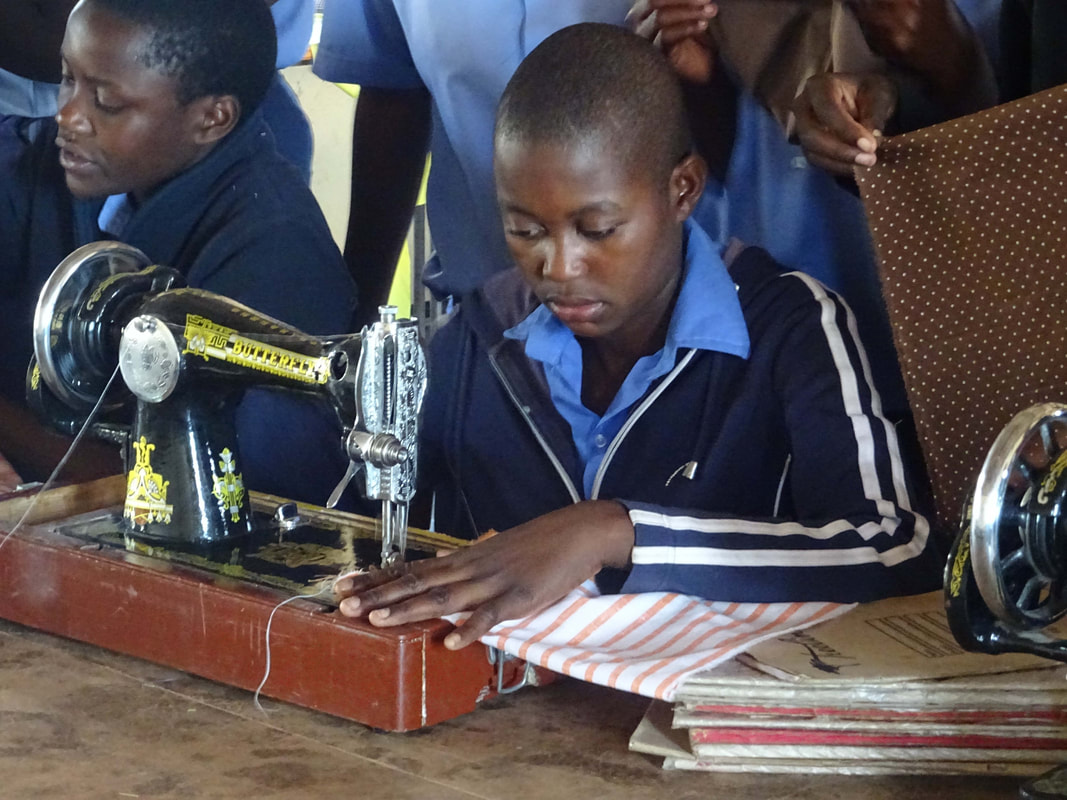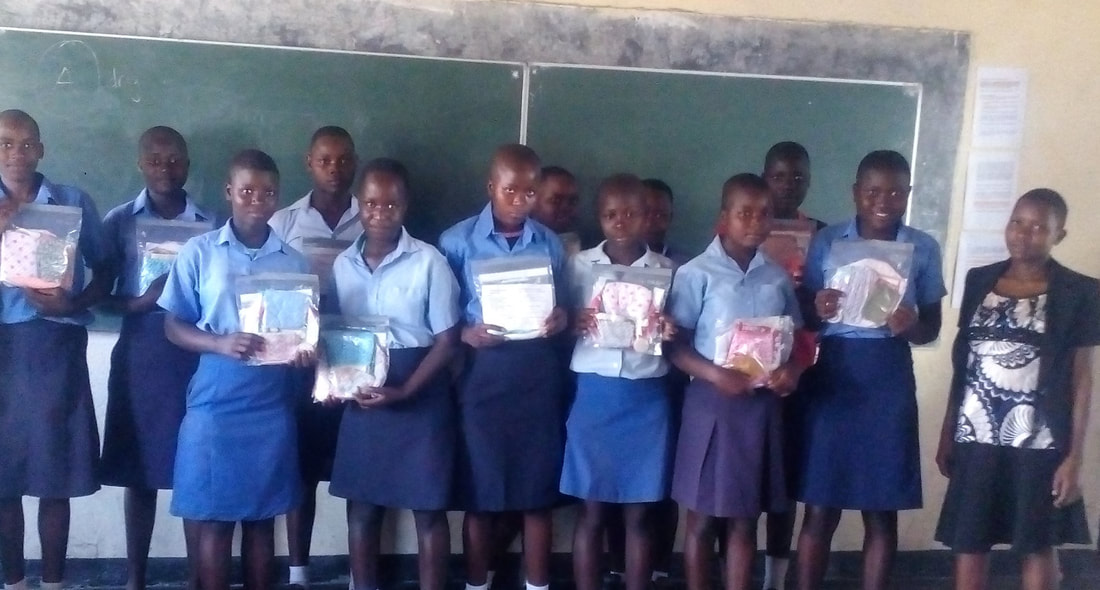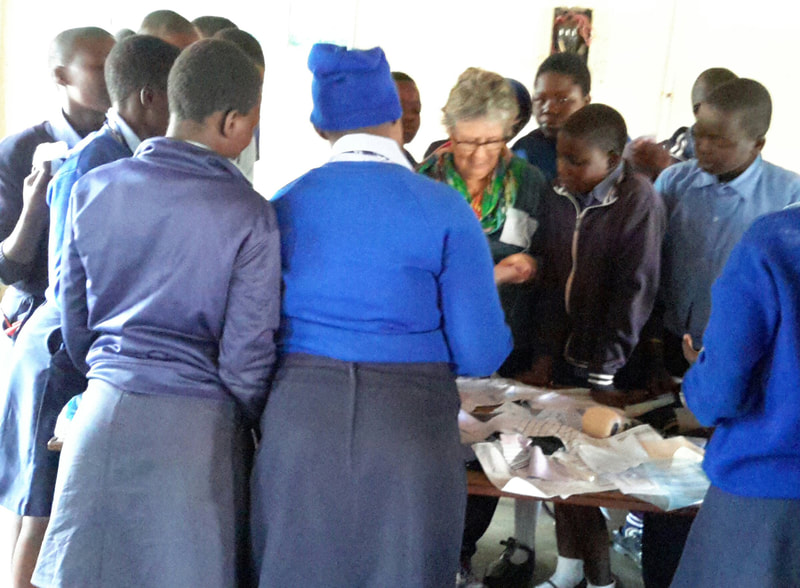Charities Studio CC is supporting for 2019/2020.
Ovarian Cancer Research
At Timeless Textiles in Newcastle, textile artists are creating Fearless Flowers in a campaign for Ovarian Cancer Research.
Do you like to create things? What if something you made with your hands could lead to a breakthrough in Women's Health? A group of textile artists in Newcastle has thrown out a challenge to artists around Australia to create hand-made textile flowers to raise funds for Ovarian Cancer Research. They need our help.
Some of us at Frocks have been travelling up to Timeless Textiles in Newcastle and joining their Wednesday Makers Group in making flowers and thought it would be a great idea if Studio CC supported this fantastic endeavour.
So if you or your group would like to join us then get out those needles and thread, oil up your machines, dive into your stashes and get creating. If you're into knitting or crochet then why not knit up a storm of flowers with all those scraps of wool.
There is a myriad of ideas on Pinterest and the Internet and if you have any ideas then let me know so i can put them up on the website to inspire others.
When you have created your Fearless Flowers pop them in the post and send them to Studio CC, PO Box 3064, Wamberal 2260. We will then take them to Timeless Textiles in Newcastle where on International Women's Day 2020 they will be sold.
Check out the ABC Facebook link below for further information and to see some of us felting Fearless Flowers.
www.abc.net.au/news/2019-06-08/ovarian-cancer-research-promoted-with-fearless-flowers-campaign/11178162
www.pinkmeetsteal.com
|
Fabulous Fearless Flowers made by Sandra Wilson, Monica Beves, Lyn Cochrane, Ann-Maree Kelly, Maxine Johnson, Anne Rowland, Sue Kelly, Barbara Foster and Suzanne Gray. A very big thank you to all the girls making flowers for this wonderful cause. Please keep them coming. A special mention to Elizabeth Lawrence for her contribution of gorgeous leaves.
|
Sewing Project, Alpha Mpapa High School.
|
Sewing in Zimbabwe
When I was living and working on Hamilton Island, I was fortunate enough to to meet a group of women who supported an orphan in Zimbabwe. The orphanage was a direct result of the Aids epidemic. One of these women, Pammie Harrison, a nurse, was returning to the orphanage. I asked to go with her but all I had to offer were my sewing skills. Initially, I was asked to teach 8 girls at the orphanage to sew reusable sanitary hygiene kits. This number increased to 50 when I was asked to teach at the local high school. Whilst I was at the high school, I learnt that many of the students weren't in class because their parents couldn't afford the $3US per year for the fabric to attend the class for the 4-year course. That's how the Sewing Scholarship Project came about. Four years into the project and 160 students, both boys and girls are supported with $3US each year for fabric so they can attend the class. In addition, pre-cut sanitary hygiene kits for girls and vest kits for boys are sent to the students (called learners in Zimbabwe). Students spend their lunch time sitting together sewing their kits by hand. I am returning in July to deliver 2 machines, an inverter, battery and solar panel for the Sewing class at Alpha Mpapa High School, Chikombedzi, Zimbabwe. None of this could have been achieved without the support of my sewing buddies. So many, including STUDIO CC, have helped financially with donations of fabric and their time helping me put kits together. And recently, students from Gosford High School spent their lunch times cutting and packing kits. Every email I receive from the headmaster of the school has a sincere thank you to the people who make this happen. These children can't believe there are people, in a far away county called Australia, who care about them. Leanne Abbott |
For more information on how you or your group can help, contact Leanne by emailing her at [email protected]
Check out the following websites:
www.afadu.org.au Click on Vocational Skills then "pad". If you wish to donate click on "donate" and it will take you to RAWCS (Rotary set up for tax deductible donations) then click on "Sewing Project".
www.sewaid.com Here Tony Castley from Hobby Sew takes sewing teachers to different countries that are in need. They spend time teaching women to sew. They leave machines with them and a business plan.
Check out the following websites:
www.afadu.org.au Click on Vocational Skills then "pad". If you wish to donate click on "donate" and it will take you to RAWCS (Rotary set up for tax deductible donations) then click on "Sewing Project".
www.sewaid.com Here Tony Castley from Hobby Sew takes sewing teachers to different countries that are in need. They spend time teaching women to sew. They leave machines with them and a business plan.
An update from Leanne from her recent visit to Zimbabwe;
Hi,
Yesterday I began teaching at the school. I had long talk with the teacher. She said there had been a lot of tears in her classroom. I have only been sending kits to the scholarship holders. Girls who are not receiving a scholarship have been asking why they don't qualify for a kit. Hence the tears. I should never assume. I just thought if parents have money for fabric for their children to attend class, they would have money for hygiene products. I must have preempted is problem because I had asked the headmaster the numbers of all the students. Thanks to the girls at Gosford High School and my sewing friends I had enough kits to give all the girls who hadn't already received a kit.
The teachers mentioned that their inspection went really well. The inspectors saw the photos, text book and kits as positive incentive for the education of these children. It's about keeping the girls in particular at school, not married and not having babies. The support form Australia is helping achieve this. The students also scored very well in their practical exam garment. The garments are marked externally.
I did have a major accident. When setting up the battery I accidentally touched the black to the red or was it red to the black? A big 'oh no!!!!' from me. This ment that the inverter was fried and had to be sent 150km to the nearest town to be fixed. Well, not quite, they couldn't fix there it so it went overnight to Harare. Another 9 hrs drive. I still don't know if it is fixed.
The lesson for the day became 'black to black' and 'red to red'. I really believe there will not be one student in that school who will ever make my mistake.
For the rest of the lesson they embroidered their initial onto a piece of fabric that eventually will be part of their needle case that they will make on the machine. The interesting thing is they have never done any embroidery. A simple chain stitch became an exciting lesson. Now there is talk of putting some embroidery on their examination garment. Some good may have come from my accident.
Next day I turned up with the inverter from the orphanage. Every learner (as students are called here) had a go machining with no thread and paper. Lots of laughter and many were scared of the machine. Learning to control the machine with their foot was foreign to them. Before I left, I demonstrated threading the machine. The simplicity brought many ooos and rrrs.
The students were given kits and photos of the high school girls in Australia that helped cut the kits.
The solar panel is already on the roof. Fortunately, the teachers are experienced with electric machines and I feel that when the inverter arrives they and the students will be turning out even better garments.
Mrs Leanne from Australia
Hi,
Yesterday I began teaching at the school. I had long talk with the teacher. She said there had been a lot of tears in her classroom. I have only been sending kits to the scholarship holders. Girls who are not receiving a scholarship have been asking why they don't qualify for a kit. Hence the tears. I should never assume. I just thought if parents have money for fabric for their children to attend class, they would have money for hygiene products. I must have preempted is problem because I had asked the headmaster the numbers of all the students. Thanks to the girls at Gosford High School and my sewing friends I had enough kits to give all the girls who hadn't already received a kit.
The teachers mentioned that their inspection went really well. The inspectors saw the photos, text book and kits as positive incentive for the education of these children. It's about keeping the girls in particular at school, not married and not having babies. The support form Australia is helping achieve this. The students also scored very well in their practical exam garment. The garments are marked externally.
I did have a major accident. When setting up the battery I accidentally touched the black to the red or was it red to the black? A big 'oh no!!!!' from me. This ment that the inverter was fried and had to be sent 150km to the nearest town to be fixed. Well, not quite, they couldn't fix there it so it went overnight to Harare. Another 9 hrs drive. I still don't know if it is fixed.
The lesson for the day became 'black to black' and 'red to red'. I really believe there will not be one student in that school who will ever make my mistake.
For the rest of the lesson they embroidered their initial onto a piece of fabric that eventually will be part of their needle case that they will make on the machine. The interesting thing is they have never done any embroidery. A simple chain stitch became an exciting lesson. Now there is talk of putting some embroidery on their examination garment. Some good may have come from my accident.
Next day I turned up with the inverter from the orphanage. Every learner (as students are called here) had a go machining with no thread and paper. Lots of laughter and many were scared of the machine. Learning to control the machine with their foot was foreign to them. Before I left, I demonstrated threading the machine. The simplicity brought many ooos and rrrs.
The students were given kits and photos of the high school girls in Australia that helped cut the kits.
The solar panel is already on the roof. Fortunately, the teachers are experienced with electric machines and I feel that when the inverter arrives they and the students will be turning out even better garments.
Mrs Leanne from Australia
